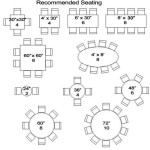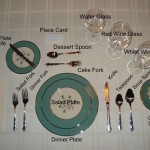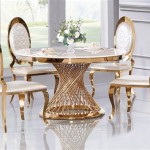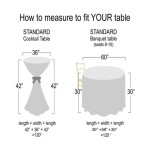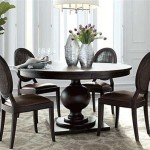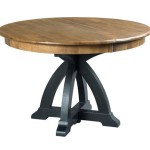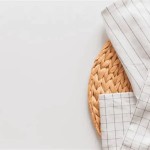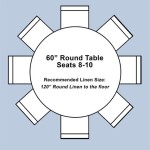How To Put a Table Runner on a Round Table
Table runners add a touch of elegance and visual interest to any dining setting. While their application on rectangular or square tables is relatively straightforward, round tables present a unique challenge. This article provides a comprehensive guide on various methods for effectively using table runners on round tables, enhancing the overall aesthetic appeal.
Method 1: The Classic Centerpiece
The most common approach involves draping the runner across the center of the table, allowing it to cascade evenly over opposite sides. This symmetrical arrangement creates a focal point, ideal for showcasing a centerpiece such as a floral arrangement, candles, or a decorative bowl. The length of the overhang should be proportional to the table's size, typically falling between 10 to 18 inches. This method provides a balanced and traditional look, suitable for both formal and informal occasions.
To achieve this look, first, find the center of your round table. Place the center of the runner at the table's center point. Gently smooth the runner outwards towards opposite edges of the table, ensuring the fabric falls evenly on both sides. Adjust the length of the overhang as desired, ensuring it complements the overall table setting without obstructing seating arrangements.
Method 2: The Asymmetrical Drape
For a more contemporary and less formal aesthetic, consider an asymmetrical placement. This involves positioning the runner off-center, allowing it to drape across a portion of the table surface and fall towards the floor on one side. This creates a sense of dynamic movement and visual interest. This approach works particularly well with patterned or textured runners, highlighting their unique design elements.
To create an asymmetrical drape, start by selecting a point slightly off-center on the table. Place one end of the runner at this point and drape it across the table, letting it fall naturally towards the floor. The angle and length of the drape can be adjusted to achieve the desired effect. Consider the placement of other table décor, ensuring the asymmetrical runner complements the overall arrangement.
Method 3: The Layered Look
Layering multiple runners can add depth and complexity to a round table setting. This method involves using two or more runners of varying lengths, widths, or textures. These runners can be placed in a crisscross pattern, or layered one atop the other, creating a rich and visually appealing effect. This approach allows for greater creativity and personalization, enabling the blending of colors and patterns to match specific themes or décor styles.
To achieve a layered look, start by placing a base runner across the center of the table using the classic centerpiece method. Then, introduce a second runner, either in a contrasting color or texture, and place it at an angle across the first runner. Alternatively, position a shorter runner on top of the base runner, creating a layered effect in the center of the table. Experiment with different combinations and arrangements to achieve the desired aesthetic.
Method 4: The Circular Overlay
While less traditional, a circular overlay can be used in conjunction with a rectangular runner to create a unique and visually striking presentation. This method involves placing a circular tablecloth or placemat on top of the round table, and then draping a rectangular runner across the center. This method allows for a greater contrast in color and texture, further enhancing the table setting.
Begin by placing the circular tablecloth or placemat centrally on the round table. Ensure it is smooth and evenly distributed. Next, place the rectangular runner across the center of the circular overlay, allowing it to drape evenly over opposite sides. This creates a framed effect, highlighting the circular shape of the table while also incorporating the elegant touch of a runner.
Choosing the right table runner size is crucial for achieving a balanced look. For smaller round tables, a shorter runner will suffice, while larger tables require longer runners to create the desired effect. Consider the overall scale and proportion of the table and surrounding décor when selecting the appropriate runner length.
Beyond length, the fabric and design of the runner also play a significant role. For formal occasions, luxurious materials like silk or linen are often preferred. For casual settings, cotton or burlap runners can create a more relaxed atmosphere. The runner's color and pattern should complement the existing décor and tableware, adding visual interest without overwhelming the overall aesthetic.
Experimenting with different placement techniques and runner styles can help create a unique and captivating dining experience. By considering these methods and tailoring them to individual preferences and décor styles, one can effectively utilize table runners to enhance the beauty and elegance of a round table setting.

Table Runners For Round Tables Find The Right Runner

Hugedomains Com

How To Decorate With Table Runners Setting Ideas Tablecoversnow Com

The Best Round Table Runner Ideas

The Best Table Runner Ideas For A Round Dining Sonata Home Design

Our Linen Hire Team Shares 8 Ways To Style Wedding Tables

Gauze Runners On Round Tables

13 X 108 In Burlap Table Runner Natural Linentablecloth

Burlap Table Runner With Or Without Fringe Natural White

Table Runners Vs Placemats Which Should You Use Society6
Related Posts

